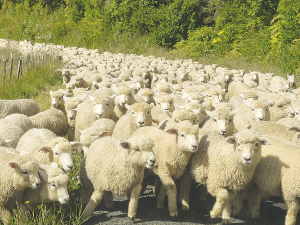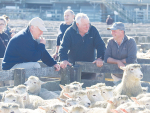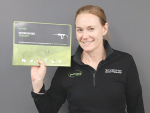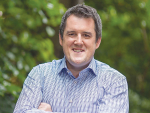Beef + Lamb New Zealand’s wormwise programme manager Dr Ginny Dodunski offers advice on preweaning lamb management and factors to consider before giving a pre-weaning drench.
Grazing management
After tailing, the amount of energy and protein a lamb requires from pasture goes up every day as mum’s milk production declines and its own requirements increase.
Offering easily harvested pasture, where lambs are not in competition with their mums (especially for the good stuff, ewes will always find this first!) is important for both growth and worm management.
Plenty of green leaf and clover will drive better lamb growth if milk production is dropping off in light ewes but will also maintain high milk production in ewes that have lambed in good condition. Lambs on these better ewes get a double whammy of continued good milk supply, and lots of good green feed. All of these factors mean they take in less worm larvae as well.
Starting a rotation or shuffle-graze system is a great way of ensuring lambs get access to fresh green feed, with the ability to drop paddocks out to maintain control when growth really takes off. Lambs also learn about being moved and are easier to manage after weaning. It’s also a great time to get poo samples when encouraging the last of a mob into the next paddock!
Worm monitoring
The cost-benefit of a pre-weaning drench can be a hotly debated topic. Where ewes have lambed in good condition and been well fed throughout early lactation, it’s likely they will have created less pasture contamination, and the lambs themselves will have lower worm burdens from grazing better covers and having a higher milk intake. A pre-weaning drench in this situation may do little to improve lamb growth.
In areas that have come out of drought, or been hit by weeks of wet, a pre-weaning drench of lambs may help shore things up until lambs can be weaned and the ‘reset’ process begun.
Faecal egg counting of lambs pre-weaning can be a useful tool. Where everything is going well and lambs have low FECs, this data can reassure that a pre-lamb drench is not needed. In Southland, faecal egg counts can help determine the challenge from Nematodirus. In the upper half of the country, larval cultures on preweaning faecal samples can also give you a steer of early levels of Barber’s Pole worm, so you don’t get caught out later. Very high FECs at this time are also a warning sign that Barber’s Pole is about early in the season.
Drench use
Drenches given in late spring have the potential to set up the first ‘wave’ of drench resistant worms for the season. They’re given at a time when worm egg-hatching and larval development are optimal from high numbers of young animals (who are the biggest worm contaminators on the farm). For three weeks after a drench, the only worms laying eggs and contributing larvae to pasture are those that have survived that drench. It makes no sense to use a partially effective drench at this time, both from a financial and efficacy point of view.
Ideally, choose a product that, in the last 12 months, has been shown to be highly effective on the worms on your farm. If this information is not available, seek advice from someone who knows their stuff in this space, and be sure to do a 10-day drench check on treated lambs to assess the efficacy of this first drench.
Planning ahead
Now is a good time to make a worm management plan for the summer. Look for ways to avoid having a monoculture of lambs going around and around on the same area for many months – can cattle and ewes be integrated into their grazing area?
Short-term crops are an easy way to ‘break’ the worm cycle on a small area. Longer term crops provide better nutrition than perennial pasture but require more careful drench management to avoid building up a population of ‘drench survivor’ worms. Areas that have grazed another species over the lambing period can also provide ‘cleaner’ feed for lambs so lambs may be able to go longer between drenches.
Some farms are able to grow lambs well on perennial pasture with extended drench intervals – presumably via very good nutrition, high grazing residuals and with close observation.
In all cases, never assume – make sure regular monitoring of worm levels in lambs is part of the plan. This includes post-drench FEC checks on a regular basis.
One good result in January may not suffice, as the predominant worm species, and balance of resistant and non-resistant worms in stock, changes through the season.



















